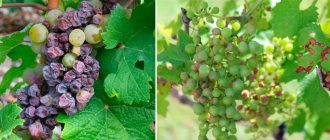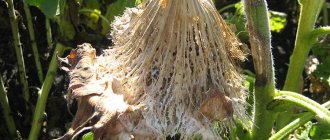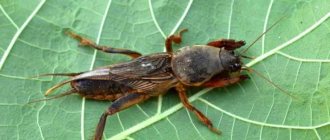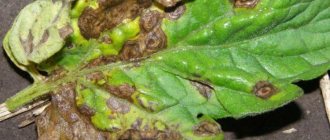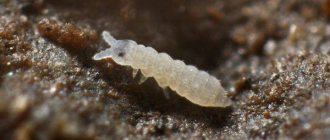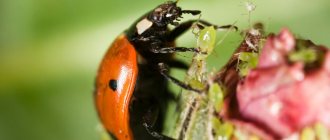People who are seriously and enthusiastically involved in gardening know examples of areas free from pests. In these areas, experienced and talented gardeners have created a biocenosis, a self-regulating system of natural balance. In this system, predatory insects, or entomophagous insects, play an important role, devouring insect pests. In an ordinary summer cottage, entomophagous insects are also able to significantly reduce the excesses of pests. In our article we will talk about the types of entomophagous insects, what pests they eat and how to lure them into the garden.
Beneficial insects - predators and beneficial insects - parasites
In nature, everything is interconnected: we plant plants that are food for herbivorous insect pests, and herbivorous pests are food for entomophagous insects. Entomophages are divided into two large groups: predators and parasites.
| Entomophagous insects | Interaction with pests |
| Predators | Larval and adult predators hunt pests, kill and devour them. |
| Parasites (parasitoids) | They lay eggs on or in the body of the pest, the larvae hatch and eat it. |
Both predators and parasites are in most cases pollinating insects. These insects are beneficial to the garden in every way. The first and most reliable sign that helps to distinguish garden pests from beneficial insects is low mobility. Pests move little and reluctantly; for the most part they sit on the plant and snack on it. Predators are nimble, they are constantly on the move, they hunt.
Enemy No. 1 - aphids: why they are dangerous and how to defeat them
Aphids are an insect that is equally dangerous for both the garden and the vegetable garden. The pest sucks the juice from leaves and fragile shoots, simultaneously poisoning the plants with poisons that cause their inevitable death. Aphids are carriers of infections and viruses; in the absence of timely eradication measures, they can destroy most of the crop, especially fruit in the garden.
You can and should fight aphids in the following ways:
- Mechanical - washing off the insect with a stream of water under pressure (not 100% effective).
- Treatment with an ash-soap solution both to combat and prevent the appearance of insects.
- Removing aphid carriers - ants - from the site.
- Tinctures based on plants with insecticidal properties (garlic, dandelion, sorrel, marigold, etc.).
- Decoctions of tobacco, celandine, yarrow, tansy, hot pepper, wormwood, etc.
- Planting aphid-repellent crops that can secrete phytoncides (mint, lemon balm, mustard, lavender, etc.) near the affected plants.
If none of the methods helps solve the problem, insect pests can be destroyed using chemicals.
The most common entomophagous insects
26 species of entomophagous insects have been registered in Russia, and they are used with great success in industrial horticulture and vegetable growing, and in greenhouses. In open ground, much smaller amounts of entomophages can be used, but they can protect plants from pests better than pesticides. Here are the most common and effective insects:
| Entomophage | What pests does it destroy? |
| ladybugs | Leaf aphids, oribatid aphids, spider mites, scale insects and false scale insects, psyllids, coccids, mites. |
| Gallica | Various types of aphids. |
| Ground beetle | Cutworm caterpillars, codling moths, moths, hawthorns, vegetable fly eggs. |
| hoverfly | Aphid |
| Rider | Butterfly caterpillars, fly larvae, aphids, apple moths. |
| Soft-bodied beetles (firefighters) | Various caterpillars, aphids, small slugs. |
| Pied beetles (beetles), (bee ants). | Bark beetles, longhorned beetles, grinders, weevils, etc. |
| Lacewing | Whitefly, aphids, etc. |
As you can see, there are no ants in this table. For them, aphids are a pet, which they care for like shepherds for a flock.
Polinka Moderator FORUMHOUSE
For ants, aphids are a natural cash cow, and the milk is the sweet “juice” that the gorged aphid secretes. To “milk” the ant, it is enough to tickle the aphid. The ants protect the aphids and transfer them to richer pastures (fresh plants) so that the aphids grow fat and provide milk to the ants. Bastards...
But we should dwell in more detail on the most common species of entomophagous insects in our latitudes.
We remove the bear on our own
One of the most harmful insects is the mole cricket. It destroys both young and adult plants. If seedlings die individually in the open ground, despite sufficient watering and consumption of sunlight, then, most likely, this earthen cancer has appeared in the garden.
It is very difficult to calculate for sure whether this pest is in your garden. In its habitats you can see small holes or tubercles, reminiscent of mole tracks on the surface of the earth. This is an amazing insect, it can fly, crawl and even swim. It becomes more active in the late afternoon, and during sunset you can hear characteristic sounds like chirping grasshoppers. A mole cricket may appear in a particular area completely by accident, choosing it for its permanent residence.
Manure heaps and compost pits serve as a place for mole crickets to lay eggs; they are warm and have enough food. However, under a simple dry bed, it can also feel good, feeding on the roots of vegetable crops. Despite their medical benefits, they are a real disaster for the gardener; to get rid of them you need to approach the matter responsibly, otherwise a large amount of the crop will perish, and next year there will be much more of them.
Traditional methods of breeding mole crickets
Without resorting to chemical methods, you can use folk advice. The kapustyanka, as summer residents also call it, loves to huddle in manure; it is attracted to manure heaps, in which they lay eggs and remain for the winter. By using traps made from this fertilizer, you can significantly reduce the number of insects or get rid of them completely.
At the end of the season, several holes about 50 cm deep are dug in the area and manure is poured into them. As soon as the temperature drops significantly, you can dig up the contents and scatter them in those places on the surface where necessary so as not to waste the fertilizer. In order not to think and guess when to do all this, it is better to focus on the snow. With the first snow you can go check the traps. Although it is not necessary to check, having pulled everything out of the recesses, the mole cricket will simply freeze, because it is in a dream, it will not find a new place.
In the spring, you can place traps throughout the area, scattering piles of manure 2-3 shovels deep. It is necessary to make embankments as often as possible, at a distance from each other from 2 to 4 meters. Before checking the traps, you should wait at least three days so that this earthen crayfish has time to reach it and understand that this is its new home.
If you find a possible mole cricket hole, you can pour water into it with the addition of a small amount of oil. A solution of soapy water is also suitable for this case. She will get to the surface or die without crawling out into the light. The mole cricket is also afraid of the smell of pine needles, kerosene and rotten fish; of all the above, the most pleasant option is definitely the first.
Insecticides against mole crickets in the garden
There is also a chemical method of exposure, but it is not as simple as the previous ones. The Metaphos drug is added to corn or wheat porridge with oil, and then laid out under the same traps with manure or under the beds at a shallow depth. The method is effective, but not very convenient, because when planting in a garden bed, you don’t really want to think and bother about digging to place the poisoned porridge, especially since this needs to be done more often than simple dung blendes.
It’s up to the gardener to decide everything, because besides Metaphos there are other poisonous drugs, but they all require a careful and thoughtful approach
Using such products can harm the crop, you should always remember this and use it with caution
ladybugs
The most common insect predators.
Here is a photo of a ladybug larva.
They look like microscopic crocodiles. Their color is remarkable: bright red or yellow spots on a dark background.
Unfortunately, many people confuse the eggs and larvae of the ladybug with the eggs and larvae of the Colorado potato beetle and mercilessly destroy them. But the larvae of the Coloradoan are almost perfectly round and pinkish. And the eggs of the pest are bright orange, while those of the ladybug are bright yellow. She lays them vertically to the surface of the leaf and is always close to aphid colonies.
By destroying the clutches and larvae of ladybugs, gardeners deprive themselves of excellent assistants in the fight against pests.
Nadanna Member of FORUMHOUSE
The larva is black and incomprehensible in appearance, like a booger. She also knows how to bite if she gets on your hand. And the already pupated one is motionless, red and looks like a Colorado larva. And they are such fools, everyone strives to pupate on potatoes, and the tricky thing comes to them, especially when in small plantings people manually collect.
During the larval phase, each ladybug eats about 1,200 aphids! An adult ladybug eats about 40 aphids per day.
How to destroy wireworm?
The wireworm eats potatoes, beets and carrots, but avoids legumes. He himself has the appearance of a dense beige worm, which is inactive on the surface. It’s not for nothing that they gave it this name; it really looks like a piece of wire. To prevent it from appearing in much larger quantities, vegetables should be planted further apart . You can add dolomite flour , which will reduce the acidity of the earth, which this worm loves so much.
Weeding should occur more often if one day a summer resident notices this insect. There should be no weeds even in potato plantings. By the way, if you plant vegetables and legumes in different directions, the harmful destroyer will die. He gets used to one type of food, even his favorite potatoes and beets will not replace each other, such alternation is an effective relief. It’s not difficult to protect your crop by planting something across a row of peas or beans. The gardener will not lose anything, he will only improve the quality and quantity of fruits, and the wireworm will die as soon as possible.
When planting potatoes, you should pour a little ash or add a solution of potassium permanganate . The acidity of the soil will decrease, which means there will be no temptation. Periodic loosening of the soil also helps reduce the population. Wireworms living in the soil will end up on the surface, so the gardener can easily collect and destroy them.
You can easily build traps that are set at the end of the season. There is no need to rush to remove heaps of leaves before wintering; it is better to leave them on the site. The wireworm will climb into the mouldering hill for the winter, and the gardener needs to collect these traps and burn them as soon as the cold weather arrives.
There are a sufficient number of options for getting rid of this parasite; you can choose any, but if you use several methods at once, you can be guaranteed to achieve very good results.
Ground beetles
This is what a ground beetle looks like: the color of the insect can be black or metallic.
Ground beetles are constantly on the move, chasing pests every minute of their lives. Over the summer, each ground beetle eats more than 300 caterpillars.
And this is what a ground beetle larva looks like.
They are black, shiny, with chest legs, also very nimble, moving surprisingly quickly. Gardeners often mistake them for pests and destroy them, thereby causing great damage to their garden. They hunt at night and try to hide during the day. During the day, each larva eats three times more pests than it weighs.
SergeyAnn FORUMHOUSE Member
The ground beetle is the most useful beetle. It does not harm the plant, on the contrary, it helps.
Pied beetles
With their shape and color, pied beetles resemble a bee or an ant, which is why they are called bee beetles or ant beetles.
This predator is invaluable for ornamental and fruit gardens, as it settles in trees and preys on bark beetles, borers and other dangerous pests. Their larvae live under the bark, move along the passages made by pests, and mercilessly destroy their larvae.
Lacewings
The lacewing is also probably familiar to everyone: it is a cute, ballet-like graceful green or beige insect that often lands on the windows of houses in the summer. They have a characteristic smell of mice, which scares away enemies from them.
Despite its innocent, angelic appearance, the lacewing is one of the most bloodthirsty predators. This is a nocturnal hunter; during the day it rests, and at nightfall it goes to deal with aphids. It is the lacewing that is artificially grown to protect plants in greenhouses, including rare plants in greenhouses.
Look at her face.
It is an incredible aggressor: one larva devours more than 500 adult aphids during its larval life; and one female lacewing lays more than 400 eggs!
Nadanna
Brown larvae can be seen in aphid plantings. This is a lacewing. She doesn't look very pretty and, of course, falls under attack.
Hoverflies
Hoverflies are valued both as entomophages and as excellent pollinators. A characteristic feature of these flies: during flight they do not buzz like others; the sound that is heard when their wings move is reminiscent of the murmur of water.
Predatory species of hoverflies lay eggs directly into aphid colonies. There are several hundred eggs in one clutch, and one larva can eat from 500 to two thousand aphids.
Plants
In many entomophages, larvae feed on pests, and adult insects eat nectar (some eat both nectar and pests). Therefore, entomophages choose to live in places where honey plants, umbellifers and cruciferous plants with small flowers grow.
The best plants to attract entomophages:
- dill;
- parsley;
- clover;
- onion;
- caraway;
- parsnip;
- carrot;
- oregano;
- St. John's wort;
- celery,
- sunflower;
- buckwheat;
- Vika;
- Tartar;
- tansy.
- daisies; daisies, marigolds (attract hoverflies).
These plants are planted along the edges of flower beds and tree trunks, forming flowering borders from them. It is advisable to plant plants so that they bloom, replacing each other, or give preference to those that bloom for a long time (basil, oregano, rosemary, hyssop, etc.)
Pests of plum, cherry plum, peach and apricot
Plum jam, apricot marmalade and cherry plum adjika - you risk losing all of this if you don’t take care of eliminating pests in your garden.
| Pest | How to recognize | Control measures |
| Plum moth | The pest feeds on plum pulp. The fruits do not have time to ripen and fall to the ground. | Biological Regular loosening of tree trunk circles. Removal of weeds and root shoots, sanitary pruning of trees. Chemical The trees are treated with Fufanon-Nova. |
| Plum pollinated (reed) aphid | Pest colonies cover the branches and leaves of plants. A bluish coating is noticeable on the foliage. | Biological Destruction of “tops” and root shoots. Chemical Treatment with Karbofos, Kinmiks, Fufanon-Nova, Inta-Ts-M or Novaktion. |
| Plum papilion | The pest eats away the seed from the fruit, causing the unripe plums to fall off. | Biological Collection and destruction of carrion. Autumn digging of soil in tree trunk circles. Chemical Treatment with Confidor Maxi, Calypso, Bi-58, Dantop, etc. |
| Plum gall mite | Reddish swellings (galls) appear on young shoots. | Biological Damaged branches are removed. Predatory mites of the family Phytoseiidae are released into the garden. Chemical Treatment with a solution of colloidal sulfur (40 g per 10 liters of water) or Tedion (according to instructions). |
| Black and yellow plum (fruit) sawflies | The pest eats away the pulp of the ovaries and gnaws out the plum pit. The fruits fall from the tree prematurely. | Biological In the fall, they dig up and loosen the soil in tree trunk circles. Insects are collected by hand and destroyed. Chemical Trees are sprayed with Novaktion, Tarzan, Insegar. |
The most dangerous plum pests and how to combat them
Description and photo of insects that can leave a gardener without a plum harvest.
Shelters
Some entomophagous insects willingly settle in artificial shelters that gardeners make for them. For ground beetles, bricks, flat stones or pieces of plywood are laid out around the area, which are installed so that one end is raised above the ground by 1-1.5 cm. In these dugouts, the ground beetles will wait out the daytime, and at night they will crawl out on patrol to protect the garden frontiers.
To attract lacewings and some other entomophages, flower pots with drainage holes (bottom up) are hung on tree branches and filled with hay or simply dried grass. The hay is changed every spring.
In some areas of the garden it is recommended not to mow the grass. In such overgrown corners, where a layer of grass, leaves, etc. is created, entomophages settle for the winter.
Common earwig
The common earwig, belonging to the order Leatherwing, is well known to gardeners and gardeners. The body length is 3.5-5 mm, the front wings are solid, the hind wings are membranous. There are also wingless forms. Its claws located in the back of the body are impressive. The earwig hunts mainly at dusk and at night, and during the day it hides in dark narrow crevices.
By destroying harmful insects such as dahlia woodlice, the earwig can damage tender young dahlia plants.
Common earwig, European earwig, or tick (Forficula auricularia). © Francesco
In spring and autumn, the female lays up to 100 eggs in a hole, which she digs herself, guards them and takes care of her offspring - first about the eggs, and later about the larvae. Earwigs overwinter in shelters - in the bark of trees, cracks in buildings, in soil, in flower pots filled with small shavings or some other material, such as moss.
Settlement in the garden:
- Flower pots filled with wood shavings, moss or hay can be used as shelters. Such pots are placed between vegetable crops or hung on trees.
- Pots should be cleaned out in the winter and refilled in the spring.
- Digging around tree trunks promotes the normal functioning of the insect. Earwigs often also seek refuge for the winter under trees, in their fallen leaves.
Wednesday
Different types of entomophages require different conditions.
| Entomophages | Attractive environment |
| Ground beetles | Moist shaded areas, tall grass next to bushes and trees. From these dark corners, ground beetles go out at night to hunt flower beds and flower beds. |
| Hoverflies | It is extremely important to have early flowering plants in the garden, such as coltsfoot and even the weedy dandelion. The sooner they find nectar, the sooner the larvae will appear. If there is no nectar in the spring, larvae may not be expected until August. |
| Lacewings | Thickets of ferns, evergreen shrubs and other cool places in partial shade where lacewings lay their eggs. |
FORUMHOUSE has many supporters of organic farming who prefer to collaborate with nature, including beneficial insects. Read our article about permaculture: a method in which plants are planted to help each other grow and protect themselves from pests. Watch our video with an overview of new products for gardening.
Enemy No. 10 - slugs: why are they dangerous and what methods of fight should you choose?
Just like moles, slugs may seem completely harmless at first glance. In fact, shellfish pose a serious threat to the garden. Deprived of a shell, they choose the wettest areas of the site for themselves and try to settle in a shelter made of cardboard, boards, and stones.
Slugs can harm almost all plants without exception, damaging the trunks of seedlings and crawling into fruits and roots.
You can fight slugs first of all by reducing the humidity level in the area. This is easy to do with the help of a high-quality drainage device. In addition, regular weeding of the soil and removal of possible hiding places - boards, stones and other objects - will help reduce the number of mollusks.
The introduction of natural enemies will also play a role. Rooks, starlings, frogs, hedgehogs - they all feed on slugs, so they will help deal with the problem in a natural way.
You can make it more difficult for insects to move by using paths sprinkled with sand or crushed eggshells.
In conclusion, we note that the pests listed above are not the entire list. There are also other types of insects, mollusks and animals in the vegetable garden and garden that can significantly reduce the number of crops, causing significant inconvenience to the owners of the site. When practicing methods of dealing with the most frequent uninvited guests in the garden or garden, you should not forget to study the list of crop pests, arming yourself with the knowledge for effective control.
